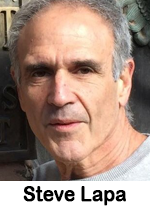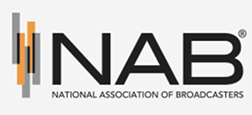By Steve Lapa
Lapcom Communications Corp
President
 Have we passed the disappointment of 2023?
Have we passed the disappointment of 2023?
If ad sales at your radio station finished last year up double digits (excluding digital) please skip past the next few paragraphs. If you’re in the same boat as most radio ad sellers across the country at various levels – i.e. local, national, syndication, network – last year was a struggle.
Now then, how is Q1 shaping up?
Are you making up for lost ground, like the airline business, automotive business, restaurants or are you still pushing that boulder uphill? Here is some straight-from-the-field unfiltered feedback:
1. Valentine’s Day at most restaurants was one of the busiest on record. People at the packed-in table next to ours waited two hours after sitting to be served. So much for a 6:45 pm reservation. They got free dessert. Seriously?
2. Travel is back, make no mistake about it. Discount airfares are a thing of the past on the big-name airlines. At 6’2” I really believe my knees should not be touching the seat in front of me in comfort class on most major airlines.
3. Try negotiating a new car deal this month. No, not the incentives on the 2023 models, I’m talking 2024 in 2024. As the goodfellows said back home, fuhgeddaboudit.
There is nothing wrong with trying to make up for the lost income of the Covid years. After all, testing the pricing upside in business is the American way. We pay more, tip more, and adjust. It is the Darwin theory eating into our wallets every day. So why are most broadcast radio sales teams at all levels still throwing it against the wall to see what sticks? I see it every day in my marketing work. We have lost touch with the excitement, the “wow” factor, the customizations, the basic intangibles of selling the great talent we represent.
Let us learn from other successful businesses. Travel pitches pent-up demand, restaurants make sure you will get the special occasion marketing message no matter where you are, and the auto business, well the ships and chips are in!
What do we not understand about the current weakness in our broadcast radio sales strategy?
1. How current is your value proposition? Successful podcasters like Joe Rogan and Alex Cooper along with YouTubers, Facebook, Instagram, and all social media have changed the game-forever. How does your value proposition stand out today?
2. Talk radio will not go away. Programmers and talent will learn what they need to adjust to refocus one of the great radio formats ever created since someone said, “Let’s play the top 40 songs over and over.”
3. Let us start re-thinking what broadcast radio sellers need to prioritize to make a difference-today.
Steve Lapa is the president of Lapcom Communications Corp. based in Palm Beach Gardens, FL. Lapcom is a media sales, marketing, and development consultancy. Contact Steve Lapa via email at: Steve@Lapcomventures.com.
Share this with your network



 Have we passed the disappointment of 2023?
Have we passed the disappointment of 2023? Association of Broadcasters and the Canadian Association of Broadcasters strongly urge lawmakers to support legislation that enables news providers to negotiate with dominant digital platforms for fair terms and conditions when our content appears on their platforms. Meta – a nearly trillion-dollar company – repeatedly chooses to restrict news content for its users to avoid compensating news producers for the value it gains on their vital journalism. These retaliatory tactics demonstrate Meta’s monopolistic dominance over the advertising marketplace and its ability to dictate how radio and TV broadcasters, newspapers and others can reach audiences online. Rather than working to ensure its users have access to trusted news and information, Meta is holding news content on its platform hostage. Policymakers should not reward Meta’s coercive behavior. At a time when misinformation, disinformation and AI-generated content proliferate online, the future of democracy relies on the accessibility of fact-based, trustworthy journalism.”
Association of Broadcasters and the Canadian Association of Broadcasters strongly urge lawmakers to support legislation that enables news providers to negotiate with dominant digital platforms for fair terms and conditions when our content appears on their platforms. Meta – a nearly trillion-dollar company – repeatedly chooses to restrict news content for its users to avoid compensating news producers for the value it gains on their vital journalism. These retaliatory tactics demonstrate Meta’s monopolistic dominance over the advertising marketplace and its ability to dictate how radio and TV broadcasters, newspapers and others can reach audiences online. Rather than working to ensure its users have access to trusted news and information, Meta is holding news content on its platform hostage. Policymakers should not reward Meta’s coercive behavior. At a time when misinformation, disinformation and AI-generated content proliferate online, the future of democracy relies on the accessibility of fact-based, trustworthy journalism.” “We’re continuing our growth trajectory every month and that’s directly correlated with the incredible OutKick talent that drives engaging content every day with personalities who are able to speak their minds.” OutKick also says it saw over 1 million social interactions on Facebook,Twitter, and Instagram, up 258% in February 2023 versus February 2022. Additionally, YouTube Video Views for OutKick attracted 7.1 million views – up 487% from the prior year, according to Shareable.
“We’re continuing our growth trajectory every month and that’s directly correlated with the incredible OutKick talent that drives engaging content every day with personalities who are able to speak their minds.” OutKick also says it saw over 1 million social interactions on Facebook,Twitter, and Instagram, up 258% in February 2023 versus February 2022. Additionally, YouTube Video Views for OutKick attracted 7.1 million views – up 487% from the prior year, according to Shareable. views, over 34 billion multiplatform minutes and averaged 82.7 million monthly multiplatform unique visitors. FOX News states that it was also “the most engaged news brand on social media throughout 2022, according to Emplifi, reaching over 445 million social media interactions. FOX News Digital drove 179.7 million Facebook interactions, 49.6 million Twitter interactions and 215.9 million Instagram interactions. On YouTube, FOX News delivered its best year ever, driving over 3.4 billion views, finishing first in the news competitive set.” While FOX News Digital topped rival CNN.com in the multiplatform minutes and multiplatform views category, CNN.com was the leader in multiplatform unique visitors – the digital equivalent of cume – with 124.9 million compared to NYTimes.com’s 89 million and FOX News Digital’s 82.7 million.
views, over 34 billion multiplatform minutes and averaged 82.7 million monthly multiplatform unique visitors. FOX News states that it was also “the most engaged news brand on social media throughout 2022, according to Emplifi, reaching over 445 million social media interactions. FOX News Digital drove 179.7 million Facebook interactions, 49.6 million Twitter interactions and 215.9 million Instagram interactions. On YouTube, FOX News delivered its best year ever, driving over 3.4 billion views, finishing first in the news competitive set.” While FOX News Digital topped rival CNN.com in the multiplatform minutes and multiplatform views category, CNN.com was the leader in multiplatform unique visitors – the digital equivalent of cume – with 124.9 million compared to NYTimes.com’s 89 million and FOX News Digital’s 82.7 million.